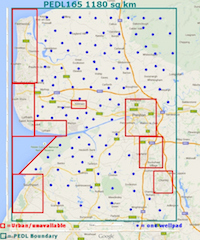What are they and why do we need them?
An environmental impact assessment (EIA) is an assessment of the possible positive or negative impact that a proposed project may have on the environment, together consisting of the environmental, social and economic aspects.
The purpose of the assessment is to ensure that decision makers consider the ensuing environmental impacts when deciding whether to proceed with a project.
You can find out more detail here http://en.wikipedia.org/wiki/Environmental_impact_assessment and the Friends of the Earth website has a very good guide here
Environmental Impact Assessments are required under The Town and Country Planning (Environmental Impact Assessment) (England and Wales) Regulations 1999 for installations such as shale gas drilling pads, if they exceed 1 hectare in size.
Cuadrilla did not have to undertake any such assessments at Anna’s Road as the site was only 0.77 hectares in size. The Preston New Road site is 2.6 hectares (9.9 hectares when all ancillary land is counted) so they did have to complete one for their planning application there.
With the potential that fracking has for causing environmental accidents, and also for degrading the amenity value of the local environment we feel that the regulatory authorities should be insisting that an Environmental Impact Assessment is undertaken before and drilling takes place at each site. We need to be clear that without such baselines it will be extremely difficult if not impossible to hold the drilling companies legally and financially to account in the event of problems at a future date.
An Environmental Impact Assessment for each well must be seen as a bare minimum regulatory requirement to safeguard the interests of local residents and to keep the drilling companies on their toes.
To paraphrase a well known saying “what can be measured gets done”. If it can’t be measured then we have no reasonable recourse.
Without base line Environmental Impact Assessments there can be no reasonable measurement of the future impact of fracking. That situation simply can’t be allowed to occur.
More on EIAs
European Union Directive (85/337/EEC) on Environmental Impact Assessments says there are here are seven key areas that are required to be addressed in an EIA:
- Description of the project
- Description of actual project and site description
- Break the project down into its key components, i.e. construction, operations, decommissioning
- For each component list all of the sources of environmental disturbance
- For each component all the inputs and outputs must be listed, e.g., air pollution, noise, hydrology
- Alternatives that have been considered
- Examine alternatives that have been considered
- Example: in a biomass power station, will the fuel be sourced locally or nationally?
- Description of the environment
- List of all aspects of the environment that may be affected by the development
- Example: populations, fauna, flora, air, soil, water, humans, landscape, cultural heritage
- This section is best carried out with the help of local experts, e.g. the RSPB in the UK
- Description of the significant effects on the environment
- The word significant is crucial here as the definition can vary
- ‘Significant’ needs to be defined
- The most frequent method used here is use of the Leopold matrix
- The matrix is a tool used in the systematic examination of potential interactions
- Example: in a windfarm development a significant impact may be collisions with birds
- Mitigation
- This is where EIA is most useful
- Once section 4 has been completed it will be obvious where the impacts will be greatest
- Using this information ways to avoid negative impacts should be developed
- Best working with the developer with this section as they know the project best
- Using the windfarm example again construction could be out of bird nesting seasons
- Non-technical summary (EIS)
- The EIA will be in the public domain and be used in the decision making process
- It is important that the information is available to the public
- This section is a summary that does not include jargon or complicated diagrams
- It should be understood by the informed lay-person
- Lack of know-how/technical difficulties
- This section is to advise any areas of weakness in knowledge
- It can be used to focus areas of future research
- Some developers see the EIA as a starting block for poor environmental management




























